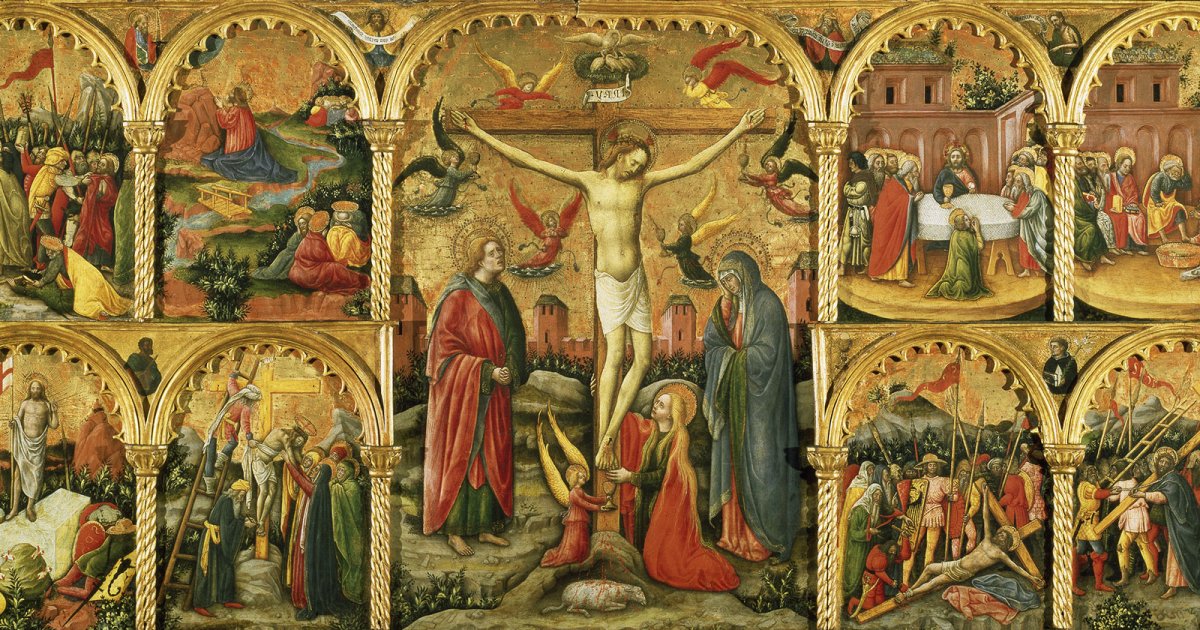CÀ D'ORO, Franchetti Gallery - Main Floor
 Language: English / USA
Language: English / USA
Go up the the Gothic staircase to reach the lobby on the main floor, where you'll find remarkable 14th and 15th century sculptures and the incredibly colorful Altarpiece of the Passion painted by Antonio Vivarini on wooden panels in several sections.
Soon after you'll find the work of art that is the museum's symbol: San Sebastian by Andrea Mantegna. Baron Franchetti especially loved this refined work that is crossed by a painful and melancholy vein. To display it as it deserved, he had a marble and gilded wood recess made specifically for it; all the subsequent productions of the Gallery followed this setup. Mantegna depicts the saint pierced by many thin arrows; if you closely observe his body, you'll notice how Renaissance painting progressed towards an almost scientific conquest of human anatomy.
The next two rooms are dedicated to bronze-working and include very refined works which are all connected to Ca' d'Oro's "privileged" century of the 1400s. You can admire a rich medal collection flanked by late-Gothic paintings, then a fascinating collection of Renaissance bronzes along with two beautiful paintings by Vittore Carpaccio, whose work you've perhaps already admired at the Accademia in the pictorial cycle of the Legend of St. Ursula.
But your glance will likely already have been captured by the white light filtering in from the Portego Room with its balcony overlooking the Grand Canal: the museum's most famous sculpture, entitled the Young Couple, seems to look over this enchanting view of sky, water, and architecture with a sigh, and is a true poetic masterpiece.
If you love fifteenth-century painting, you will find many other beauties in the halls of this floor, with paintings by Venetian, Lombard, and Tuscan masters. If instead you don't have much time, go directly to the wooden staircase that leads upstairs, where you'll continue to be amazed.
FUN FACT: if you look carefully at the bottom right of Andrea Mantegna's work, you can read a Latin inscription that reminds us that the artist painted it at an old age. The inscription says: "Nothing is permanent except God: the rest is smoke".



